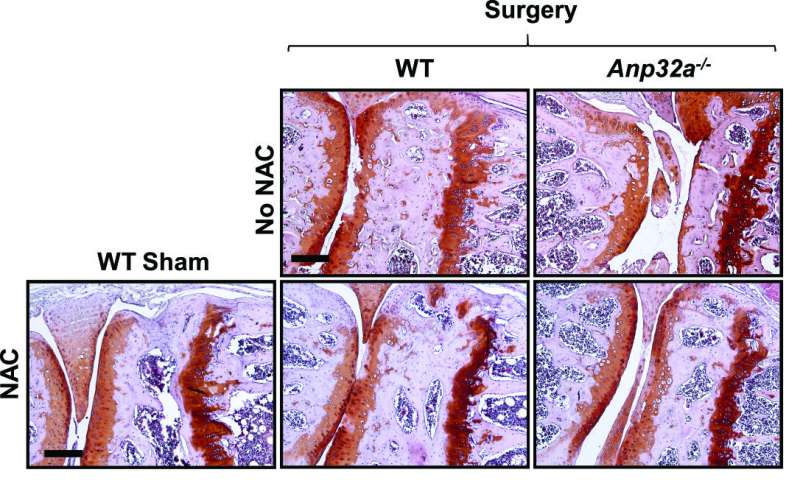September 14, 2018 report
Antioxidant found to be effective in treating mice with osteoarthritis

A team of researchers in Belgium and the Netherlands has found that feeding a common antioxidant to test mice was effective in treating osteoarthritis. In their paper published in Science Translational Medicine, the group outlines their study of the cause of the most prevalent joint disorder in the world and what they found.
Osteoarthritis is a degenerative disease that results in loss of joint cartilage and bone. It is most common in older people and results in pain and disability for millions of people the world over. There is currently no cure and treatment is limited to drugs that reduce associated inflammation. In this new effort, the researchers have made inroads regarding understanding how the disease comes about and have found a therapy for it that proved effective in mice.
The work involved studying people experiencing osteoarthritis. They studied tissue samples and found decreased levels of the protein ANP32A. So they investigated the role it plays in the body—genetic profiling showed that the protein was involved in monitoring levels of an enzyme called AMT. Under normal circumstances, levels were adjusted to respond to oxidative stress in cells in joint cartilage—low levels led to increased stress. This finding suggested that boosting ANP32A levels artificially might prevent the progression of the disease. Intrigued by their findings, they administered an antioxidant called N-acetyl-cysteine (NAC) to test mice with osteoarthritis—they had been bred in a way that made them unable to make ANP32A. NAC is currently used to improve lung function in people with emphysema, cystic fibrosis, tuberculosis, bronchitis and other lung ailments. The researchers report that adding it to the mice's water led to reduced loss of bone and cartilage compared to untreated mice.
The researchers note that because of differences in physiology, it is unlikely that giving NAC to people with osteoarthritis would help much—they plan instead to look for ways to induce increased production of ANP32A in patients, thereby preventing the degenerative disease from taking its toll.
More information: Frederique M. F. Cornelis et al. ANP32A regulates ATM expression and prevents oxidative stress in cartilage, brain, and bone, Science Translational Medicine (2018). DOI: 10.1126/scitranslmed.aar8426
© 2018 Medical Xpress


















